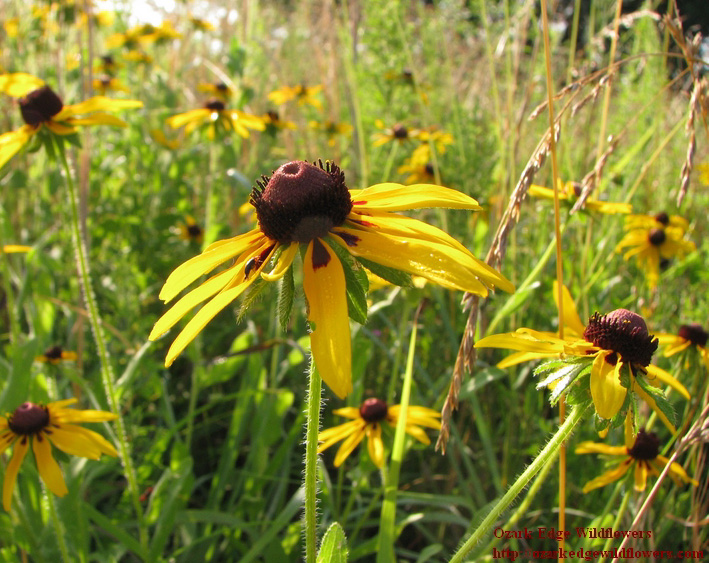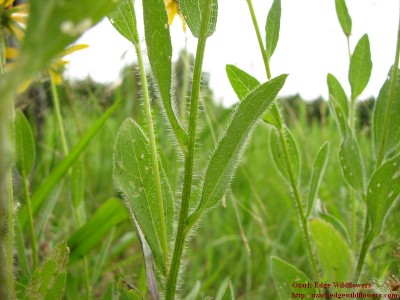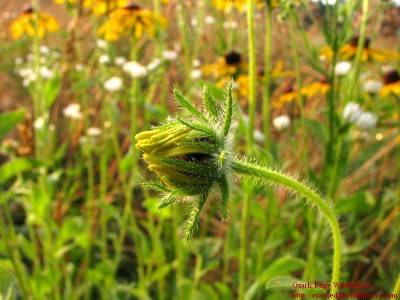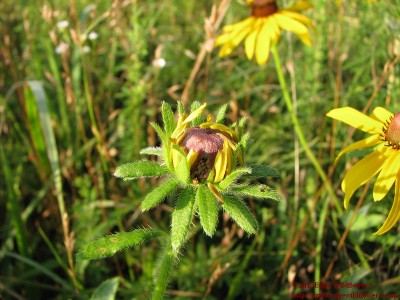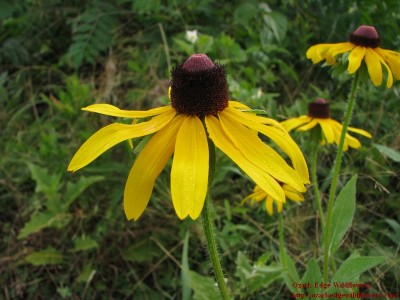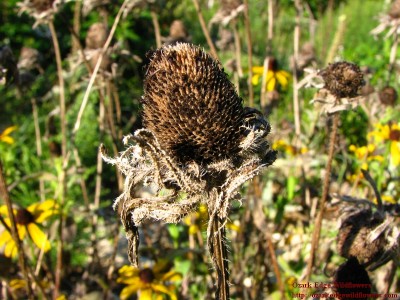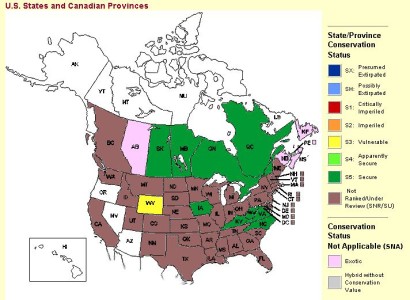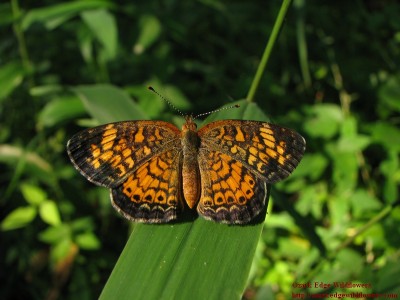Rudbeckia hirta, what’s not to love about this plant? It thrives in full sun, poor, dry soil AND puts on a floral show for months from summer to fall. This pretty flower is the one that most of us think of when the word, “wildflower” is mentioned. It is the mother plant for many cultivars grown in gardens across the country. These are especially important in the southern United States, where we are always searching for flowering plants that will endure our heat and summer droughts. Rudbeckia hirta is happy to oblige.
Latin Name/Common Name- The Swedish taxonomist, Carl Linnaeus assigned the scientific name, Rudbeckia hirta in honor of his botany teacher, Olof Rudbeck. In Latin, the word “hirta” means hairy and refers to the hirsute stem and leaves. The most frequently used common name is “Black-eyed Susan”. There are many plants that share this common name, so it’s important to use the Latin name if you want to specifically refer to this beloved native flower. Rudbeckia hirta is in the asteraceae family.
Bloom Color- There are actually two types of flowers on each flower head in the asteraceae family- disk flowers and ray flowers. Rudbeckia hirta has 8- 30 ray flowers of bright, mustard yellow. Sometimes there is a darker color at the base of each ray. We often refer to the ray flowers as petals. These flowers are not fertile.
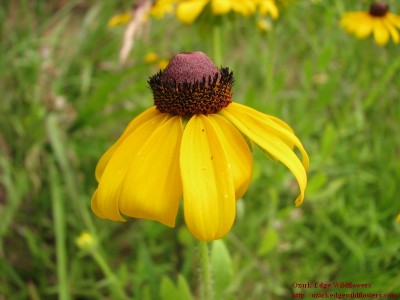 Bright yellow ray flowers surround a dark brown cone of disk flowers
Bright yellow ray flowers surround a dark brown cone of disk flowers
The disk flowers are fertile. These are the tiny flowers on the dark brown cone in the center of the inflorescence. There are from 200- 300 disk flowers on each brown cone. Each one of the disk flowers has a pistil and five stamens. Each produces one seed–called an achene. These seeds are long lived and have been known to sprout even after 30 years.
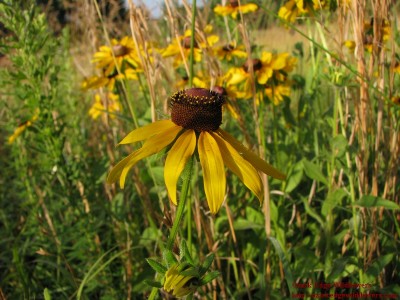
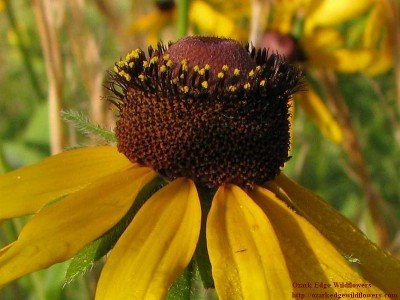 Close-up view of the disk flowers
Close-up view of the disk flowers
Description- Rubeckia hirta may act as an annual, biennial or even short lived perennial. Usually a basal rosette of leaves overwinters, produces flowers the second year and then dies. The stem and leaves are covered with bristly hairs. Even the roots of this plant are covered with hairs. The root system is fibrous- no tap root or rhizome. The root hairs substantially increase the surface area available for water absorption. The leaf hairs also reduce water loss. Altogether, the hairy nature of the plant makes it highly adaptable to surviving dry, hot conditions.
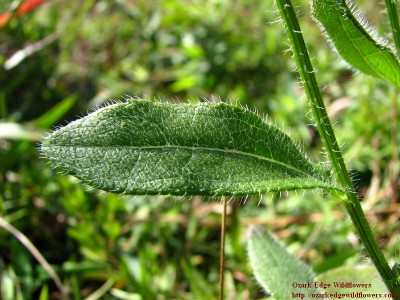 Stem and leaves covered with copious amount of hair
Stem and leaves covered with copious amount of hair
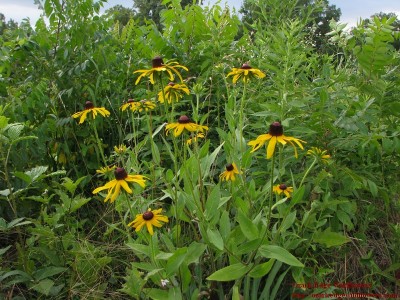 Many flowers on a single plant
Many flowers on a single plant
Bloom Time- This is one of our longest blooming native wildflowers. On Ozarkedge, it may be found in bloom from June through September.
Habitat- Rudbeckia hirta thrives in the sunny fields on Ozarkedge. It can take the full, southern sun and also thrive in partial shade at the woodland edge.
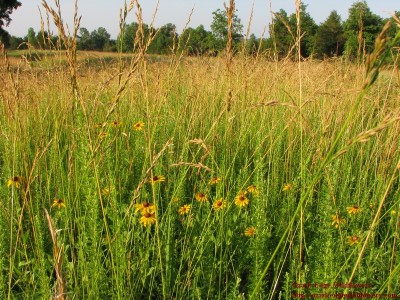 A grassy field or meadow is a perfect habitat for Rudbeckia hirta
A grassy field or meadow is a perfect habitat for Rudbeckia hirta
What’s Growing Nearby?- There are many companion flowers sharing space with Rudbeckia hirta. Erigeron philadelphicus (Common fleabane), Asclepias tuberosa (Butterfly weed), Ruellia humilis (Hairy wild petunia), Helianthus mollis (Ashy sunflower), Silphium integrifolium (Rosin weed), Helianthus silphoides (Ozark sunflower), Passiflora incarnata (Passion vine), and Penstemon tubaeflorus (Tubed beardtongue) are just some of the prairie wildflowers joining Black-eyed susan in the fields of Ozarkedge.
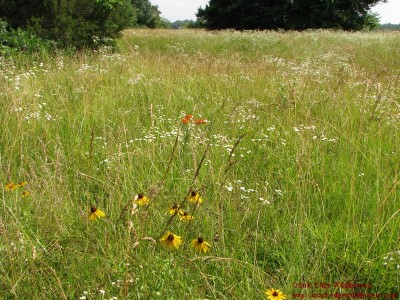 Rudbeckia hirta and Asclepias tuberosa
Rudbeckia hirta and Asclepias tuberosa
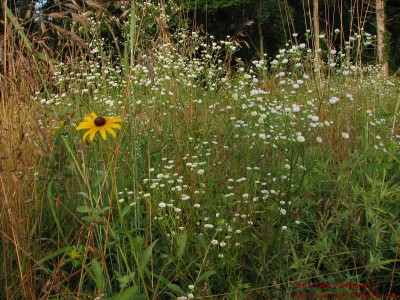 Erigeron philadelphicus growing with Rudbeckia hirta
Erigeron philadelphicus growing with Rudbeckia hirta
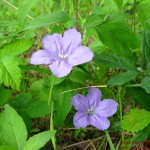
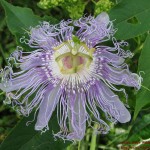
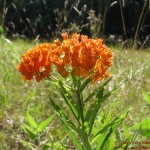 Ruellia humilis Passiflora incarnata Asclepias tuberosa
Ruellia humilis Passiflora incarnata Asclepias tuberosa
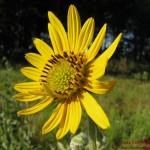
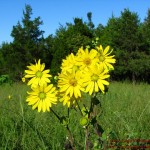
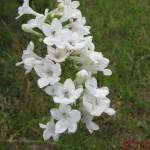 Helianthus mollis Silphium integrifolium Penstemon tubaeflorus
Helianthus mollis Silphium integrifolium Penstemon tubaeflorus
In addition to native wildflowers, there are invasive alien plants that are commonly encountered growing alongside Rudbeckia hirta. These plants are sometimes discussed in wildflower books, but are not always identified as non-native wildflowers. Instead of wildflowers, they are more correctly referred to as exotics, aliens, invasives, weeds and/or non-natives. The problem is that they do not have natural predators to keep them in check, so they often take over the diminishing habitat available for our native plants. Just as bad, they often don’t provide food for the insects that our songbirds rely on for sustenance. The aliens frequently have pretty flowers. In fact, they are usually here because they escaped cultivation. Some of the weeds that invade the habitat of Rudbeckia hirta (and friends) are Daucus carota (Queen Anne’s lace), Verbascum thapsus (Common mullein), Leucanthemum vulgare (Ox-eye daisy), Carduus nutans (Musk thistle) and Torilis arvensis (Hedge parsley).
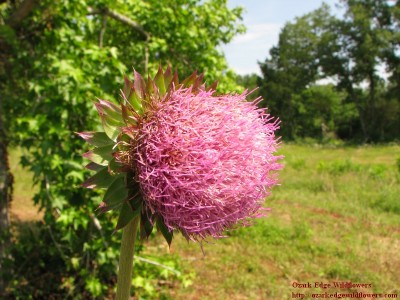 Exotic invasive Carduus nutans (Musk thistle)
Exotic invasive Carduus nutans (Musk thistle)

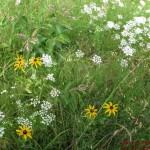 Exotic invasive Torilis arvensis (Hedge parlsey) encroaching on Rudbeckia hirta habitat
Exotic invasive Torilis arvensis (Hedge parlsey) encroaching on Rudbeckia hirta habitat
Endangered List- Rudbeckia hirta is native to almost all of North America. Even though it’s a tough plant, it’s still endangered in New York. It’s easily grown from seed, so please don’t dig from the wild.
http://plants.usda.gov/java/profile?symbol=RUHI2
The Natureserve site shows that Rudbeckia hirta is Secure in most of its native range that has been ranked except for Wyoming where it is Vulnerable. But….most of its native range is Unranked or Under Review.
Interesting Tidbits- The Gorgone checkerspot (Chlosyne gorgone) uses Rudbeckia hirta as a larval host plant and source of nectar. The Bordered Patch (chlosyne lacinia) does as well.
